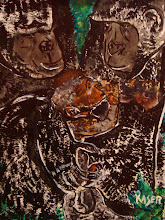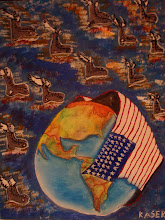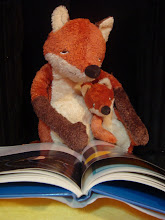
 Experiment 1: What is a gear wheel?
Experiment 1: What is a gear wheel? When I turn a gear wheel, I can use it to transfer the motion, or force, that I apply to it to another gear wheel. Because the wheel's little teeth mesh together or interlock the rotation or turning motion is passed on. The smaller wheel has fewer teeth, so it has to turn more often and therefore faster for each rotation of the bigger wheel. The direction of rotation changes in this process of motion transfer.The interlocking wheel turns in the opposite direction.
 Experiment 2: What direction does the wheel turn?
Experiment 2: What direction does the wheel turn?

 Experiment 2: What direction does the wheel turn?
Experiment 2: What direction does the wheel turn? The direction of rotation changes from gear to gear. The third one turns in the same direction as the fist one.
 Experiment 3: Now what direction does the wheel turn?
Experiment 3: Now what direction does the wheel turn?

 Experiment 3: Now what direction does the wheel turn?
Experiment 3: Now what direction does the wheel turn? The wheel with the little flag turns in the same direction as the big wheel.
 Experiment 4: Can gears turn a corner?
Experiment 4: Can gears turn a corner?
 Experiment 5: What can I do with gears?
Experiment 5: What can I do with gears?

 Experiment 4: Can gears turn a corner?
Experiment 4: Can gears turn a corner?Yes, Not only can the motion be transferred on a straight surface, it can also go around the corner, up or down. As long as the gear wheels interlock, the motion is passed on.
 Experiment 5: What can I do with gears?
Experiment 5: What can I do with gears? I can use gears to make a crank for hauling a bucket up from a well or someting heavy. When I turn the crank handle of the large gear, the cord from wich the toy hangs winds up or down. Experiment 6: What is a wheel?
Experiment 6: What is a wheel?
 Experiment 6: What is a wheel?
Experiment 6: What is a wheel?bikes steer using the handlebars,wich are directly connected to the front wheel. When I turn the handlebars to the right or left, it moves the front wheel the same way and the bike goes into a curve. This is also how tricycles or bicycles work

This model I build shows a simple kind of car steering. When I turn the steering wheel, the lower wheel turns too, and the steering rod attached to it pushes forward and then back again. Since the steering rod is attached to the front axle at its other end, the axle automatically has to move as well Wheels
Wheels
 Wheels
Wheels 



















.jpg)








No comments:
Post a Comment